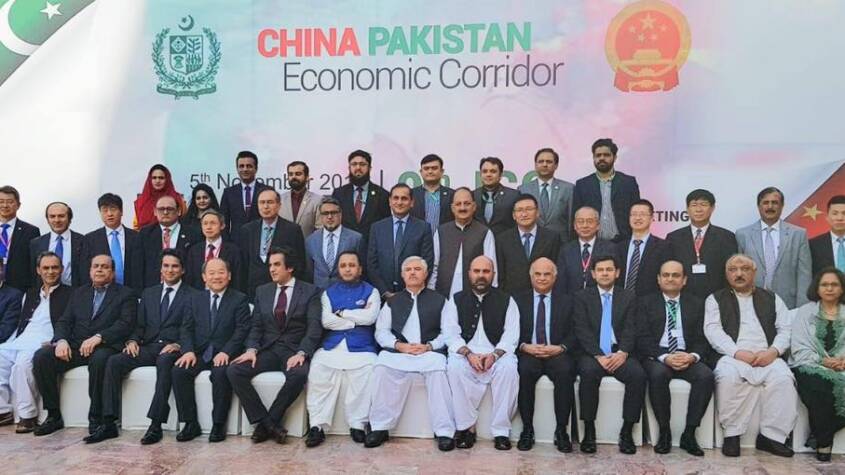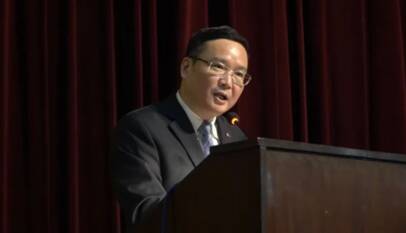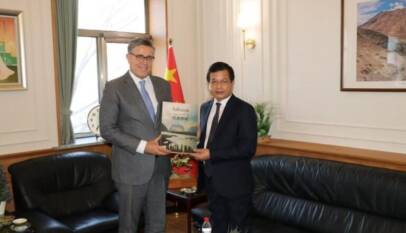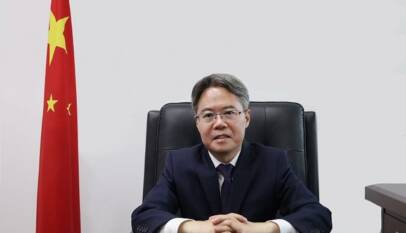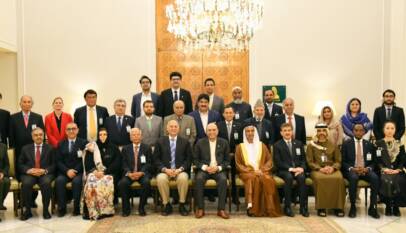JCC Meeting provided momentum to second phase of CPEC, sets new direction for bilateral cooperation
The recent Joint Cooperation Committee (JCC) meeting reflected the transformation in the direction of China-Pakistan partnership under CPEC framework. The two countries have worked on an agenda to broaden the horizon of CPEC beyond energy and infrastructure projects towards copper and gold mines, oil and gas exploration and production, affordable housing, steel production, agriculture, and social sectors. Both sides stressed on enhancing bilateral industrial cooperation through relocation of Chinese manufacturing units to Pakistan. They also decided to fast-track development work on various projects such as the ML-I Railway project, construction of Motorways on Eastern and Western routes of CPEC, and border fencing along Iran and Afghanistan borders to provide protection to the CPEC projects. JCC successfully set a new dimension for CPEC, said Chinese Envoy Yao Jing after the meeting. Minister for Planning Khusro Bakhtiar briefed that Pakistan has the potential to bring $8-10 billion Chinese investment in the oil and gas sector alone over the next three years, while the Pakistan steel's restoration would spare $4 billion in import expenditure annually. On occasion, Hassan Daud Butt, CEO Khyber Pakhtunkhwa Board of Investment & Trade (KP-BOIT) spoke that JCC was projected to break the 'inertia' of CPEC projects being slowed or stopped. It also provided a firm momentum to China-Pakistan economic collaboration in the second phase of CPEC, he added. CEO KP-BOIT observed that the Agricultural sector of Pakistan can grab $2-5 billion through export revenues.
The decisions made at the 9th Joint Cooperation Committee (JCC) meeting in Islamabad last week indicate a significant shift in the dynamics of the ongoing cooperation between Pakistan and China around the multi-billion-dollar China Pakistan Economic Corridor (CPEC) initiative.
The JCC has worked out a programme to expand the scope of the future bilateral economic cooperation beyond large infrastructure projects to copper and gold mining, oil and gas exploration, agriculture, affordable housing, social sector and steel production. Its focus was on energy and transport infrastructure in the last five years. More significantly, the JCC agreed to give a stronger push to the bilateral industrial cooperation to help Chinese firms relocate their manufacturing facilities to Pakistan for boosting exports, substituting imports and creating jobs.
Additionally, the two sides decided to begin or speed up work on different new and stalled transport and energy infrastructure schemes like the $9.2 billion ML-I project to upgrade the railway line from Peshawar to Karachi, construction of highways to complete eastern and western routes of CPEC, fencing of borders with Afghanistan and Iran to secure CPEC projects and so on.
The JCC meeting was fruitful, discussions were successful and the agreed framework is promising, Yao Jing, China’s ambassador to Pakistan, declared after the meeting. “The JCC has set a new direction for CPEC. The discussions also took place to shift Chinese manufacturing units to Pakistan and provide Chinese financing facilities for future projects.”
‘Chinese firms are excessively pampered by their government. They expect similar treatment from us’
Minister for Planning Khusro Bakhtiar pointed out that Pakistan could attract Chinese investment of about $8-10bn in the next three years in the oil and gas sector alone while the revival of Pakistan Steel would save it $4bn in imports every year. He sought to dispel the general impression that work on CPEC-related initiatives had either slowed down or stalled. He listed actions that the government undertook in the last one year to remove the bottlenecks in the efficient implementation of projects like Gwadar Port and Gwadar Free Zone. The government also tackled the energy tariff issues, formed a CPEC Authority to serve as one-window shop for all CPEC-related issues and increased the release of funds for CPEC-related development projects from the federal Public Sector Development Programme (PSDP).
The JCC meeting is projected to break the ‘inertia’ that was stalling or slowing down work on several projects around the corridor initiative for the last one year and is likely to give stronger impetus to bilateral economic cooperation in the second phase called CPEC 2.0. Pakistan could see billions of dollars flowing from China into its economy and the Chinese industry relocating here over the next several years, enhancing exports, substituting imports and creating jobs if the plan is implemented, according to officials like CPEC Project Director Hassan Daud Butt that this correspondent spoke to.
“Cooperation in the agriculture sector can fetch us $2-5bn a year in export revenues,” Mr Butt said. On industrial cooperation, he asserted: “We are going to start developing three of the nine special economic zones (SEZs) – Rashakai in Khyber Pakhtunkhwa, Dhabeji in Sindh and Allama Iqbal Industrial City in Punjab- between Nov 29 and Dec 30. We expect to finish development work in one year to enable Chinese investors start relocating their manufacturing units here.”
But many are still wary of attaching too many hopes to this initiative at the moment. Even the planning minister expressed his optimism with a caveat. “If we could put all energies together and provide an enabling environment, the newly agreed framework has the potential to transform Pakistan from a low-income to a middle-income country in the next five to eight years,” he said at the post-JCC presser.
However, a Punjab government official, who frequently interacts with Chinese and other foreign investors interested in investment in the province, says Pakistan needs to do a lot to inspire confidence in Chinese firms. “Development of economic zones is just one factor that is impeding Chinese investment in Pakistan. There are several other issues that we need to tackle before Chinese companies can start relocating their units here.”
According to him, a wide trust gap exists among Chinese firms. “We must remember the fact that Chinese firms are excessively pampered by their government and they expect similar treatment from our side for bringing their capital here.”
By way of example, he pointed out that a majority of Chinese companies is not interested in fixed investment in land and building. “They come here looking for plug-and-play facilities. When we cannot offer them this facility, they move on to other countries. Take the example of Chinese garment industry. We promised them similar facilities at the proposed apparel park on the Lahore-Islamabad Motorway five years ago and have yet not delivered on it. So they have relocated their units in eight other Asian and African countries. Pakistan is still not on their radars in spite of increasing bilateral economic cooperation under CPEC.”
In addition to the absence of industrial space with plug-and-play facilities, Chinese companies are also worried about frequent economic and fiscal policy changes, high level of political instability, high rates of taxes, poor road and energy connectivity and so on. Similar concerns were raised by the Chinese ambassador during his interaction with Lahore-based businessmen some months back.
“These are systematic issues that we need to deal with on an urgent basis. We need to proactively engage with Chinese investors and authorities on these issues and improve people-to-people cultural bonds to narrow the trust deficit if we desire to take advantage of the shift in the focus of economic cooperation with China,” the Punjab government official concluded.
Chinese envoy Zhao Shiren urges students to uphold integrity and strengthen China-Pakistan ties
LAHORE:The Consul Generals from several countries and other distinguished guests attended …



